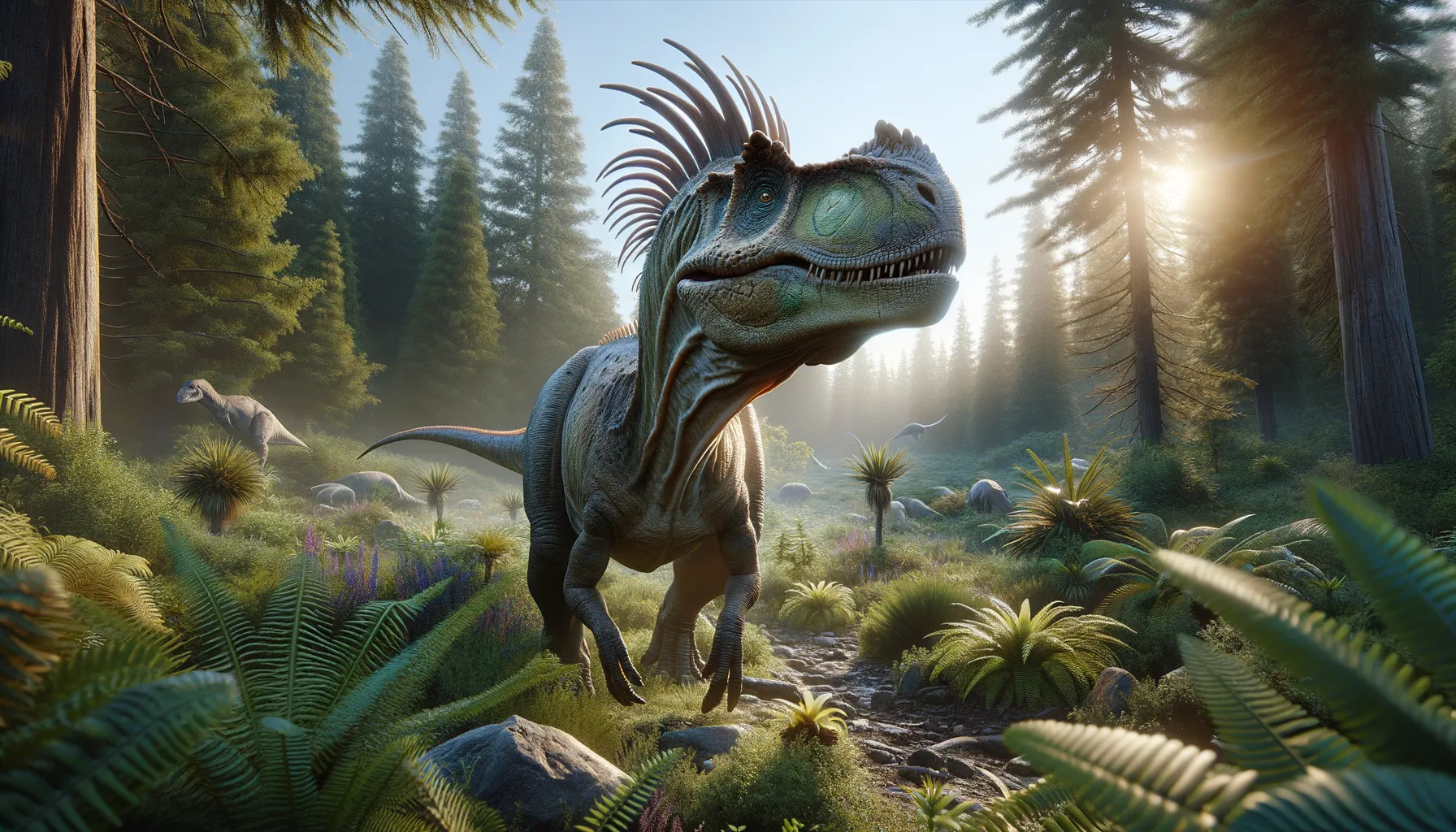
Stephanosaurus
Crested titan of the Cretaceous world!
Period
Cretaceous
Length
Roughly 9 meters (29.5 feet) long.
Height
Approximately 3 meters (9.8 feet) tall.
Weight
Around 3,000 kilograms (6,600 pounds).
Stephanosaurus was a herbivorous dinosaur that roamed the Earth during the late Cretaceous period. It is known for its distinct cranial ornamentation, including a prominent crest, which may have been used for display or species recognition. Fossils of this dinosaur have been primarily found in North America. Stephanosaurus lived in dinosaur-rich environments teeming with diverse flora and fauna, which influenced its adaptation and survival strategies.
Diet
Stephanosaurus was primarily an herbivore. It fed on a variety of plants and foliage available during the Cretaceous period. Its diet likely consisted of ferns, cycads, and conifers, which were abundant in its habitat.
Hunting
As a herbivore, Stephanosaurus did not engage in hunting. Instead, it spent much of its time browsing for plants. Its size likely provided some protection from carnivorous predators, minimizing the need for speed or agility in hunting scenarios.
Environmental challenges
During its existence, Stephanosaurus faced environmental challenges such as changes in climate and fluctuating food availability. These dinosaurs lived in regions that experienced periodic droughts, which could impact plant life. They needed to adapt to these changes in their environment to survive. Additionally, competing with other herbivorous species for resources was a constant challenge.
Speed
Moderate; likely moved at slower speeds.
Lifespan
Approximately 50 to 60 years.
First discovery
Discovered in 1902 in Alberta, Canada.
Fun Facts
- Stephanosaurus was a genus of dinosaur that lived during the Late Cretaceous period, around 75 million years ago.
- The name 'Stephanosaurus' means 'crown lizard', referring to its possible crested head.
- Stephanosaurus is believed to have been a herbivore, feeding on the lush vegetation of its time.
- Fossils attributed to Stephanosaurus were discovered in Alberta, Canada, within the famous Dinosaur Park Formation.
- Stephanosaurus is thought to be related to other crested hadrosaurs, which are often called 'duck-billed dinosaurs'.
Growth and Development
Stephanosaurus hatchlings started life as small, vulnerable creatures but grew rapidly into large adults. Fossil evidence suggests that these dinosaurs experienced significant growth spurts during their early years. The crests, a defining characteristic, developed as they matured, potentially playing a role in social interactions. Growth patterns were influenced by diet and environmental conditions, impacting their overall size and development rates.
Habitat
Stephanosaurus lived in lush, forested areas with abundant vegetation. Its habitats likely included riverine environments and floodplains, providing a steady food supply. These regions supported diverse ecosystems, fostering interactions with other dinosaur species. Seasonal changes in these environments could introduce challenges such as shifting food resources and predator encounters.
Interaction with other species
Stephanosaurus shared its habitat with various herbivorous and carnivorous dinosaurs. It likely traveled in groups, offering some protection from predators. The presence of large predators required vigilance when foraging. Social interactions within its species were crucial for protection and possibly mating rituals.
Natural lifespan
Stephanosaurus lived up to around 60 years in its natural habitat.
Reproduction
Like many other dinosaurs, Stephanosaurus laid eggs. Nesting sites were likely chosen based on safety and proximity to food sources. Parental care behaviors are speculative, but may have included guarding nests from predators. The exact number of eggs per clutch remains unknown, but communal nesting sites suggest possible group behavior during the reproductive season.
Social behaviour
Stephanosaurus may have traveled in herds or groups, providing safety in numbers. Social structures within groups might have been established through dominance displays involving their crests. Group living required coordination during migrations and resource sharing. These social dynamics likely facilitated survival in the Cretaceous landscapes.
Fossil locations
Fossils of Stephanosaurus have been primarily discovered in North America, particularly in Alberta, Canada. These regions have produced a wealth of dinosaur fossils, providing insights into the diverse ecosystems of the Cretaceous period. Additional finds have been reported, but the majority of information comes from Canadian excavations.
